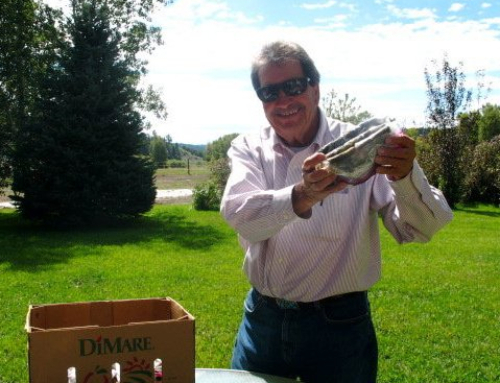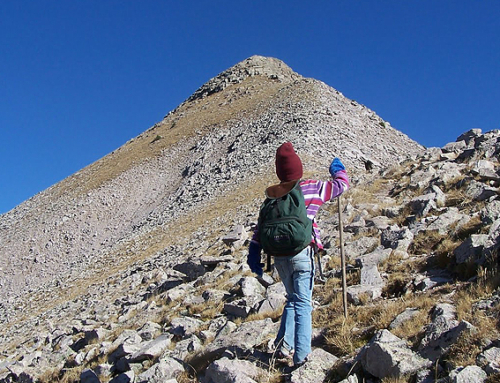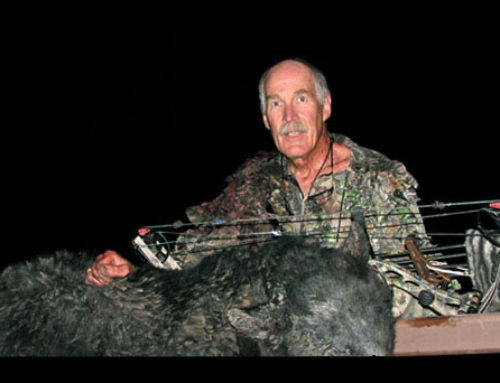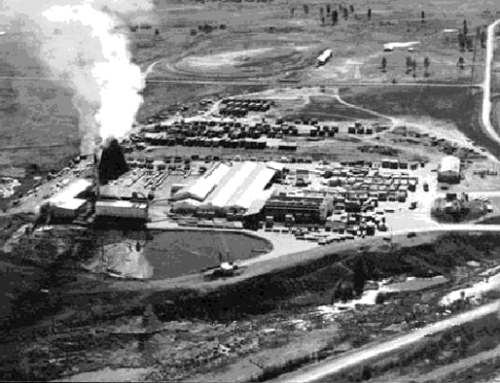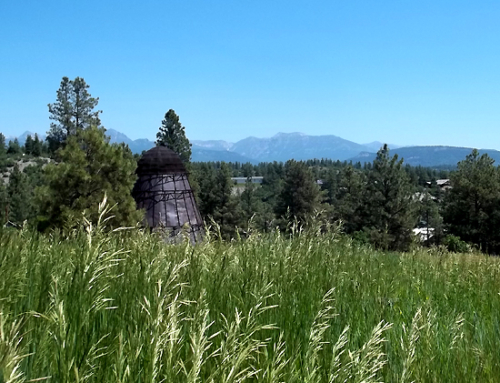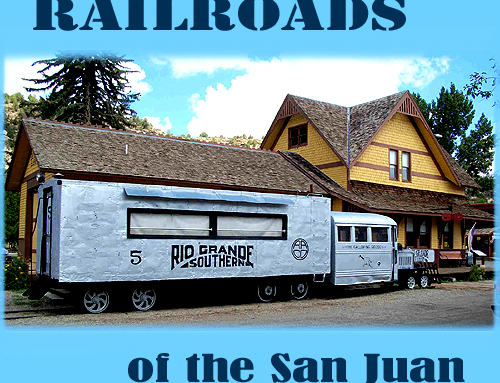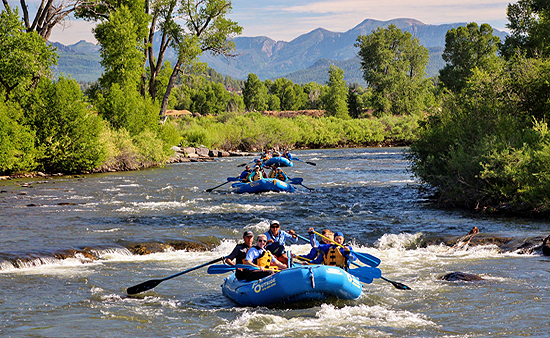 PAGOSA SPRINGS, Colo. – Public access to recreation amenities is a priority for outdoor advocates in Southwest Colorado and a new project to greatly improve an access point for boaters on the San Juan River is in the planning stage.
PAGOSA SPRINGS, Colo. – Public access to recreation amenities is a priority for outdoor advocates in Southwest Colorado and a new project to greatly improve an access point for boaters on the San Juan River is in the planning stage.
A group of residents and organizations is working to build a safe and sustainable river take-out ramp about 12 miles south of Pagosa Springs along Archuleta County Road 500, also known as Trujillo Road. Boaters have rafted this section of the San Juan — known as Mesa Canyon — for years, but access has become crowded as more people use the area.
“This is the signature run in the Pagosa area, it’s a beautiful section to float and it’s become very popular,” said Tobi Rohwer, owner of Pagosa Outside. “We’ll improve the take-out and build a parking lot to get vehicles off the road.”
The Upper San Juan Watershed Enhancement Partnership, a regional stakeholder group that includes a variety of private and public organizations, is coordinating a fundraising effort for the project. Fundraising for the project is being directed by The Great Outdoors Fund, a national nonprofit organization that helps raise money for recreation and conservation.
“This is an important project for people in Southwest Colorado; The Great Outdoors Fund is happy to provide our expertise to help get this built,” said Lori McCullough, founder and CEO of the Great Outdoors Fund.
The Upper San Juan Watershed Enhancement Partnership was formed in 2018 to explore cooperative projects that meet multiple water needs in the Upper San Juan Basin and to advance the goals of the statewide Colorado Water Plan.
“The group is studying everything related to water in the upper San Juan River Basin, including recreation, agriculture and environmental needs,” explained Ryan Unterreiner, a water resource specialist with Colorado Parks and Wildlife. The agency is a member of the watershed partnership.
Other members of the partnership include: the town of Pagosa Springs, Trout Unlimited, Pagosa Area Water and Sanitation District, Pagosa Outside, San Juan Conservation District, The Nature Conservancy, Mountain Studies Institute, Colorado Division of Water Resources, Banded Peak Ranch, the U.S. Forest Service, local irrigation companies and others.
The boat ramp project provides a great example of how local private-public partnerships can be built, Rohwer explained. Another ramp that had been used for years was on private land and the owner decided to close it a couple of years ago. So the Friends of the Upper San Juan approached another nearby landowner and asked if a take-out could be located at that site which is right next to the road. The landowner agreed and sold an acre of river property to the town of Pagosa Springs for just $5,000.
Archuleta County officials have agreed to help with some construction materials and maintenance of the parking lot and a Pagosa Springs engineer, Chris Pitcher, is designing the eddy structure and take-out at no cost. Town staff is helping with planning documents and some site improvements and other organizations in the partnership are contributing expertise and helping with fundraising.
“Even a small project like this can be complicated,” said Unterreiner. “But when people and organizations agree to work together for a common goal a lot of good things can happen that will benefit local communities.”
The organizers plan to raise $65,000 for the project.
Projects like these bring together a variety of partners and help promote collaboration among various water users, said Mely Whiting, a staff attorney for Trout Unlimited and a member of the regional watershed partnership.
“These are the kinds of efforts Trout Unlimited likes to support,” Whiting said.
“Today, partners help recreation, tomorrow agriculture, the next day the environment. And
all of it benefits our local economy.”
To find out more about the project and to make donations, go to The Great Outdoors Fund web site at: https://thegreatoutdoorsfund.org.
For more information about the project, send an email to ryan.unterreiner@state.co.us, or James Dickhoff, Pagosa Springs planning director at jdickoff@pagosasprings.co.gov.
The Rejuvenation of Pagosa Springs
This article was printed in the 2002 summer issue of The North American Sportsman Magazine.
It is impossible to put a finger on the moment or event that started the pattern of rejuvenation for the town. There were stirrings going on in the early 1980s that would lead to a mix of activity by the end of that decade.
The Archuleta (County) Economic Development Association (AEDA) formed, insisting that things can be better. They pushed for more variety and health for the local economy. Pagosa’s economy had for decades revolved around the lumber industry. When the big mill closed, it dealt a crushing blow to the economy of the entire area. Promoting to tourist and sportsmen was slowly successful and became the main industry.
Town Board member Kay Grams and Town Clerk Jacky Schick attended a state level meeting and spoke of Pagosa’s needs and a short time later Pagosa was chosen to be aided by the Rocky Mountain Institute. A series of seminars was given to interested citizens.
The Institute designed its program to give both hard data and provide small town folks with the ability to develop vision. A few of the things that came out of these meetings were plans for a river walk, the Pagosa Springs Arts Council, increased recreation in town, improving the Chamber of Commerce, downtown beautification, and the idea to develop the hot springs as a tourist resource.
In the mid 1980s local realtor Lee Riley put together a series of annual Think Tank Tours to other cities. Forty or so Pagosa area citizens went each year to learn how other towns developed positive changes. These trips were particularly valuable because Lee put diverse people and groups together in a bus for a long weekend. They learned, bonded, and created new and stronger energy. Many of the town fixtures loved by Pagosans today came from creative thinking and experiences on a Lee Riley bus trip.
Money slowly became available for improvement projects. Town Board members Kay Grams and Darrell Cotton convinced the County Commissioners that the town needed and deserved a chunk of sales tax funds. Grant and lottery money began to flow and during the mid-1980s, things began to happen. In 1986, a Gazebo in Town Park was built. 1988 saw a river walk started.
In 1990 the paved walking path along the river was extended creating Centennial Park. This walkway now extends throughout town.
Also in 1990 hot springs owner and developer Matt Mees started work in the river next to a hot spring vent. This area was a dark and lifeless place that caught trash and driftwood as snow melt water receded in summer. Matt built a dam holding the river out and collected mineral spring water, making a pond. Over several years he built fifteen organically shaped hot springs baths. The Springs Resort grew into the lovely vision and great experience it is now. Under the surface, The Springs Resort is hydraulic engineering, a maze of pipes and valves. Above the surface, it is a work of art wrought in sparkling water and the vivid colors of rock, mineral deposits, trees and flowers.
Because of these improvements, fishing has increased, rafting and tubing are more fun, and kayaking is a new sport on the river.
The river restoration involved placing boulders in specific shapes to cause a meandering effect and to scour the river bottom of sediment in places. Many truck loads of boulders were put in the river. A requirement of the project was that the flow had to remain and for every stone added to the river, a like amount of rock had to be removed. This caused deep holes to be dug that allow fish to winter over, thus returning the river to a healthier eco-system.
The summer of 2000 saw the fulfillment of the river restoration project. A new group, Pagosa Quality Fishing Project (PQFP), stocked the river in town with 16 to 26 inch trout. This instantly brought the fishery to high quality standards with a two fish take home limit per day. The San Juan River in Pagosa Springs has a variety of fishing from highly populated areas to quiet areas to a stretch that is very secluded. This in-town fishery provides a quality fishing experience that is within easy walking distance from lodging, eating, shopping and family entertainment.
While all of these projects evolved, the business community along main street responded with fresh paint and new construction. Trees were planted and the district underwent a facelift. The courthouse and several businesses had appearance changes. The town installed street lights, and built a small deck overlooking the river.
A word, to the wise, about town rejuvenation. If you contemplate river restoration and or, dramatic changes to your town, you must realize that when you make your town appealing to you – you are also making it appealing to everyone else. Pagosa Springs’ rejuvenation resulted in rapid population growth with Archuleta County listed as having the second fastest growth rate in the USA for 1996. As part of a rejuvenation project you should appoint a committee of citizens to address growth and associated cultural and social changes. There are people that can help with zoning legalities and the sociological and psychological affects of growth.
A recent Fourth of July weekend inspired this article. The crush of people downtown was, as it has been for decades, the biggest crowd of the year. Standing on the overlook deck, in one panoramic view, one could observe fishing, tubing, rafting and kayaking, but also people scampering across boulders in the river, playing river fetch with dogs, bathers migrating from hot spring pools to the river and back, and strolling along the River Walk. The flowers and bright paint along Main Street and at The Springs Resort were lovely. The river and the springs gleamed in the sunlight, and the forest Pagosa is built in was pure green. A tourist walked from her car to the deck, did a 360 degree pan of the view and gasped, “This must be the most beautiful town in Colorado!”
I have been involved in some of the civic work of the last two decades, described here, and have observed the other projects with keen interest. On that sunny Fourth of July day, I thought about the way Pagosa was when I moved here and about all of the work so many people contributed over the years. I thought of the successes and the failures, the joy and the pain of civic work. I walked down behind a restaurant’s dumpster and had a very private moment.
Pagosa Springs is a beautiful town. From all of us who worked on the town in the 1980s, you are welcome!
© 2006 Copyright by Pagosa.com

